Basket weaving moves from potato fields into art and fashion worlds

Gabriel Frey sits in his workshop, his towering frame hunched under a lamp, the only light illuminating the room. He shifts on his stool and grimaces slightly as he weaves one piece of black ash over another in a delicate but rhythmic dance.
"Our creation story is based in black ash," Frey said.
"We have the mythical figure of Kluskap, who shot an arrow into an ash tree and within the heart of the tree was Wabanaki people."
The traditional territory of the Wabanaki Confederacy, made up of the Peskotomuhkati, Abenaki, Mi'kmaq, Penobscot and Wolastoqiyik nations, is known as the "Land of the Dawn," and its black ash has been a critical resource of the Wabanaki people for thousands of years.
Frey, who grew up in a Peskotomuhkati family of basket makers in Maine, has fond memories of his grandfather pounding an ash log with the blunt side of an axe in the yard.

Historically, ash baskets were made to serve a purpose. They were fish baskets or pack baskets when Wabanaki nations lived a more migratory life.
In Canada, weaving baskets became a means of survival after the Indian Act of 1876, which confined First Nations peoples to reserves, requiring them to get the permission of an Indian agent to leave to hunt or work to provide for their families.
Many families would work together to weave baskets to sell to nearby farmers for carrying potatoes or using in other ways.
"We've always made baskets," Frey said.
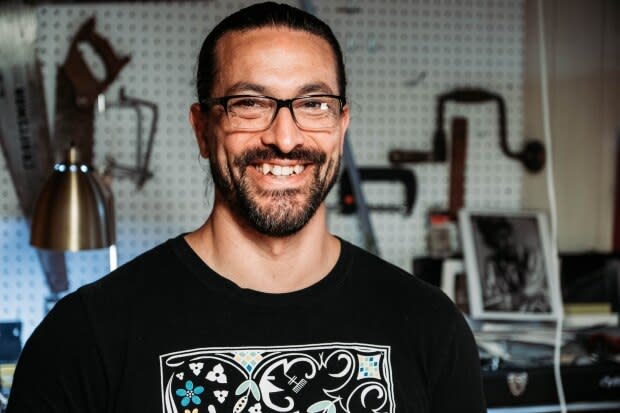
But like other Wabanaki craftspeople, Frey has been pushing the medium beyond its old utilitarian purpose. These basket weavers are taking the craft out of the potato fields and into the art galleries. Even into fashion.
Though Frey was a bit late to the craft himself, he always knew it was in his roots.
"I didn't really start making baskets until I was around 18, and that was when my grandfather was diagnosed with emphysema," he said. "I kind of got a sense of the precious nature of the work that has always been in the family."
Frey said he realized he suddenly had very little time to learn the craft — "a whole life of knowledge" — from his grandfather Fred Moore, known around the community in earlier years as someone almost too determined to respect tradition.
When Frey began to learn how to weave baskets, his grandfather wouldn't allow him to use a mould. He first had to be skilled enough to freehand weave a basket.
Frey's grandfather lived longer than the prognosis he was given, but his illness motivated Frey to spend time with his elder and learn.
Baskets for today
As he worked on his craft, Frey began to question what modern utility could look like, and how people could get the most use out of a basket today.
"How do you create something that still has this traditional form that can be carried forward and actually used, and can be even thought of as stylish, and actually interesting and be a representation of our culture that can be seen in an everyday form?"
He eventually came to the idea of making baskets to be used as purses, totes and fanny packs. Over time, he incorporated leather and other embellishments into the baskets.
Frey said he thinks his late grandfather would get a kick out of the baskets he's making today using traditional techniques.
Frey admires the work of artists who have come before him as well as those creating today.
"I'm still surprised when I see stuff in art galleries," he said, adding he still feels as if he's learning.
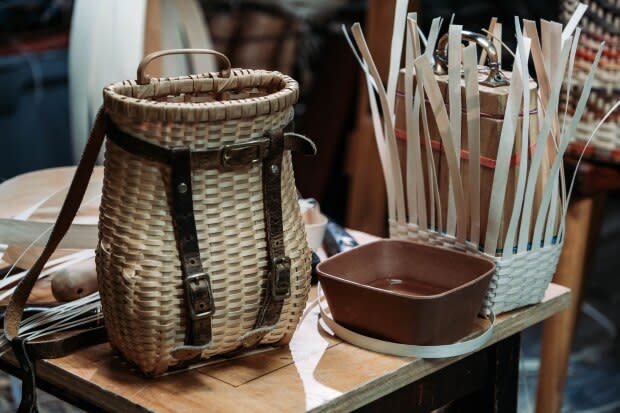
Frey is happy society has come to appreciate Indigenous art.
"You know in the past it would've been the same amount of work but for five cents," Frey said. "Now, our culture is in a place where it recognizes the amount of artistry that goes into it and actually feels comfortable paying for that."
Inspiration from elders
Shane Perley-Dutcher has been weaving baskets a different way — with silver.
"I always call our traditional knowledge keepers 'kitchen table artists' because that's where a lot of stuff was made," Perley-Dutcher, a Wolastoqi silversmith from Tobique First Nation.
Though black ash is the traditional material of Wabanaki basket weaving, Perley-Dutcher drew inspiration from late elder Charles Solomon, who once wove potato baskets to sell to farmers.
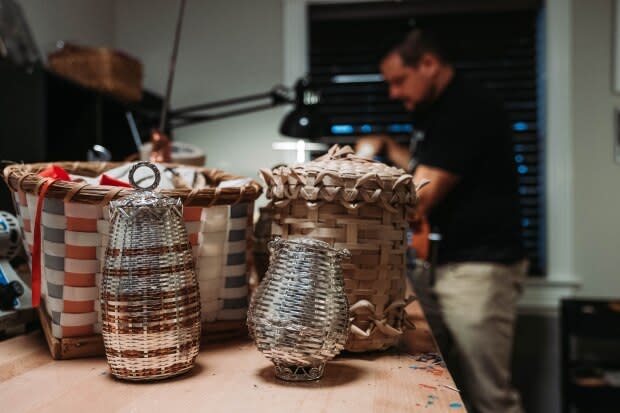
Solomon later transitioned to a more unconventional material when the physical labour of pounding ash became too difficult.
"When he couldn't pound the ash anymore, he still didn't want to give up," Perley-Dutcher said. "So what he did was he got people in the community to donate venetian blinds to him.
"He would take the venetian blinds apart and he'd still weave baskets," Perley-Dutcher said. "Just the idea of not doing it … it was a weird thing for him.
"Creator gave me the ability to do something that my ancestors loved, that I love and that my grandchildren love, so why would I ever stop doing that?"
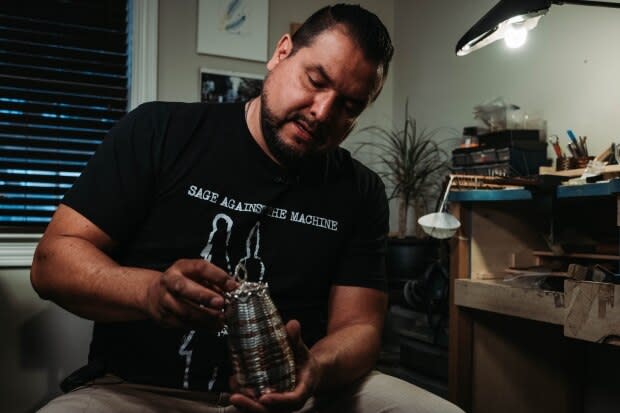
This profound message was what made Perley-Dutcher look at basket making from a different perspective. With the words of his elders in mind, Perley-Dutcher began to make baskets from silver and other precious metals.
He considers himself "pretty novice" as a basket maker. But basket weaving has become a trademark of the jewelry that Perley-Dutcher makes.
"These are just some of the techniques I've learned at a young age, practised over my career and started to apply to a different medium."
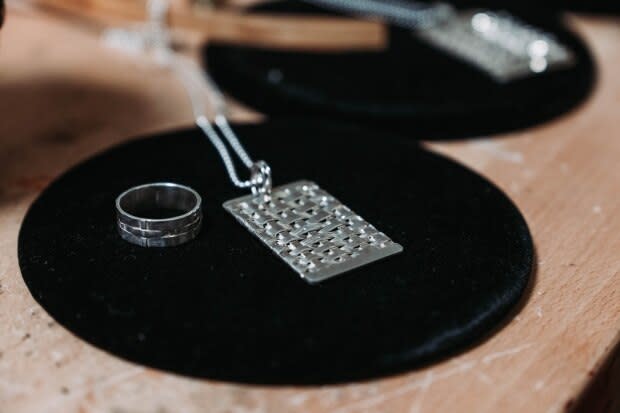
Both Frey and Perley-Dutcher attended the prestigious Santa Fe Indian Art Market in New Mexico over the summer and won in their respective categories for their work.
The two artists also have pieces in the Smithsonian Institution in Washington as well as the Abbe Museum in Bar Harbor, Maine.

